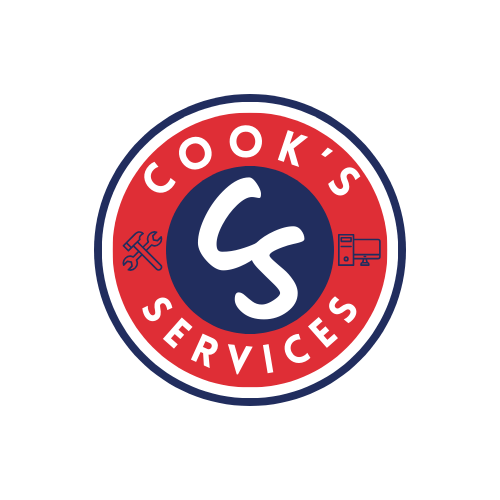Professional VMware vSphere 6.7 Exam Study Guide. 2VO-21.19
I ended up having to take the Data center virtualization VCP test as well.I figured I might as well put together another study guide since it worked for the last test.
Here are links to the resources I will be using to study for the test.
Exam Prep On VMware Learning Zone *
Exam Guide
Udemy Practice tests by Rick Crisci **
Section 1 – VMware vSphere Architectures and Technologies
Objective 1.1 – Identify the pre-requisites and components for vSphere implementation
Chapter 5 esxi Setup Guide(PDF) *
HTML Site
Chapter 2 vCenter Install Guide(PDF) *
HTML Site
Objective 1.2 – Identify vCenter high availability (HA) requirements
Need to be sure you don’t get the vCenter HA confused with vSphere HA.
Chapter 4 - vCenter High Availability (PDF) * Table 4.1 (Description of Nodes) & 4.2 (Requirements)
HTML Site
Objective 1.3 – Describe storage types for vSphere
VMware loves Acronyms, study them SIOC, VAIO(vSphere API for IO controll), RDM(Raw Device Mapping) VASA(vSphere API for Storage Awareness)
Objective 1.4 – Differentiate between NIOC and SIOC
Objective 1.5 – Manage vCenter inventory efficiently
Objective 1.6 – Describe and differentiate among vSphere, HA, DRS, and SDRS functionality
Objective 1.7 – Describe and identify resource pools and use cases
Objective 1.8 – Differentiate between VDS and VSS
Objective 1.9 – Describe the purpose of cluster and the features it provides
Objective 1.10 – Describe virtual machine (VM) file structure
Files that make up a VM
VMX
VMDK
VSWP
VMSD
VMSN
Need to know their behavior
What get created if missing
Naming convention of files
Snapshot Naming
Diff between VMFS5 and 6
How do reservations affect files
Virtual disk types
-Thin
-Thick lazy and eager zeroed
-Convert from one type to the other.
Objective 1.11 – Describe vMotion and Storage vMotion technology
vMotion foundation knowledge is essential
-need for dedicated network
-CPU compatibility
New hotness in 6.7
-encrypted VM migration
-concurrency limits
-Long distance pre-reqs
Interoperability
-What would stop a vMotion
—SRIOV
—Virtual Flash
Resource Guide Chapter 11 (PDF)
vSphere documentation
-Virtual machine Conditions and limits for vMotion
-Migrating Virtual Machines
Section 2 – VMware Products and Solutions
Objective 2.1 – Describe vSphere integration with other VMware products
The Main ones - Know the use case rather than the how to
-Site Recovery Manager
- VMware Cloud on AWS
-vRealize Operations
-vRealize Log Insight
What does each one do?
-Select the right product for the right situation.
—Analyze host logs and trigger alerts- Log Insight.
-vRealize Suite - what are the products and what do they do
—Orchestrator - workflows
—Automation - create catalog of items
—Network Insight - monitor network traffic flows and East West traffic
— Lifecycle Manager - manage the different vRealize products.
Objective 2.2 – Describe HA solutions for vSphere
Understand the following features
-HA
-Fault Tollerance
—the VM storage is replicated across datastores
—don’t rely on legacy knowledge
-vCenter HA
—components
—pre-reqs
—process to enable and disable
-vSphere Replication
—components Replication appliance
—the pre-reqs
—-constraints
—Overview of vSphere Replication
Read questions carefully
-what component are you being asked to make highly available
-Host/VM/vCenter
vSphere Availability Guide CH 2,3 & 4
Objective 2.3 – Describe the options for securing a vSphere environment
Significant objective
Security Guide CH 1 & 6
-look to the best practices section for each chapter
VM encryption
-what should and should not be encrypted
Storage security CH 11
Host security
-secure boot
-lock down modes
-host attestation dependencies
Pick the right host security feature
Section 3 – There are no testable objectives for this section.
Section 4 – Installing, Configuring, and Setting Up a VMware vSphere Solution
Objective 4.1 – Understand basic log output from vSphere products
Secure Boot and Quick Boot Logs
vSphere setup guide - free space for system logging pg 16
where the logs are and why we would look at them
Quick Boot KB
UEFI Secure boot - troubleshooting and logs
Objective 4.2 – Create and configure vSphere objects
vCenter Install guide CH1
Intro to Auto Deploy
Core vCenter component functions
-vCenter Server
-Platform Services Controller
-AutoDeploy
-Update Manager
-Components vs functionality
AutoDeploy functions should be focused on
-how to enable
-what are the 2 services and what do they do
-what install types are supported.
—statefull vs stateless
Objective. 4.3 – Set up a content library
Objective 4.4 – Set up ESXi hosts
Objective 4.5 – Configure virtual networking
Objective 4.6 – Deploy and configure VMware vCenter Server Appliance (VCSA)
Objective 4.7 – Set up identity sources
Objective 4.8 – Configure an SSO domain
Section 5 – Performance-tuning and Optimizing a VMware vSphere Solution
Objective 5.1 – Determine effective snapshot use cases
Objective 5.2 – Monitor resources of VCSA in a vSphere environment
Objective 5.3 – Identify impacts of VM configurations
Section 6 – There are no testable objectives for this section
Section 7 – Administrative and Operational Tasks in a VMware vSphere Solution
Objective 7.1 – Manage virtual networking
Objective 7.2 – Manage datastores
Objective 7.3 – Configure a storage policy
Objective 7.4 – Configure host security
Objective 7.5 – Configure role-based user management
Objective 7.6 – Configure and use vSphere Compute and Storage cluster options
Objective 7.7 – Perform different types of migrations
Objective 7.8 – Manage resources of a vSphere environment
Objective 7.9 – Create and manage VMs using different methods
Objective 7.10 – Create and manage templates
Objective 7.11 – Manage different VMware vCenter Server objects
Objective 7.12 – Setup permissions on datastores, clusters, vCenter, and hosts
Objective 7.13 – Identify and interpret affinity/anti affinity rules
Objective 7.14 – Understand use cases for alarms
Objective 7.15 – Utilize VMware vSphere Update Manager (VUM)
